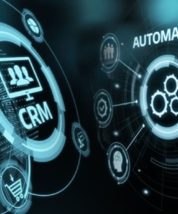Introduction
Marketing automation isn’t just about sending scheduled emails – it encompasses a wide range of techniques and tools that facilitate campaign management, lead nurturing and performance analysis. With marketing automation software, companies can automate repetitive tasks, accurately segment their audience and track prospects’ behavior throughout their buying journey.
I-Nurturing leads - email automation
Lead nurturing occupies an important place in a B2B marketing automation strategy, as it accompanies prospects throughout their buying journey.
Email automation makes it possible to send personalized, relevant content, optimizing engagement and increasing the chances of conversion.
Three key elements stand out: segmentation, personalization and workflow automation, guaranteeing an effective, targeted approach.
a- Segmentation
Segmentation is an essential step in any B2B marketing automation strategy.
It consists of dividing the database into distinct segments based on specific criteria such as industry sector, company size, the position held by the contact, or their interests.
Using b2b marketing automation tools, you can identify these segments and analyze them to better understand their needs and behaviors. Effective segmentation optimizes lead generation and lead nurturing efforts.
Grouping prospects by company size, for example, enables the right messages to be tailored to meet the unique challenges faced by each group. This reinforces the relevance of communication and improves lead scoring, since targeted messages are more likely to convert prospects into customers.
b- Personalization
Personalization is a key to success in email marketing.
Sending targeted, relevant content to each segment guides prospects along their journey. Thanks to B2B marketing automation platforms, it's possible to create personalized communication scenarios that adapt to prospects' previous interactions with the brand.
If a lead, for example, has shown an interest in a specific product, it's easy to send them additional information, case studies or even special offers related to that product.
This approach increases engagement and strengthens the relationship between the prospect and the brand. So, grating personalization into a B2B marketing strategy maximizes campaign effectiveness and increases the chances of conversion.
c- Automated workflows
Automated workflows are essential for keeping prospects engaged at different stages of the sales funnel.
Setting up automated e-mail sequences nurtures leads without requiring constant manual intervention. This not only saves time but also ensures that each prospect receives the information they need at the right time.
Marketing automation software enables the creation of complex scenarios that trigger the sending of e-mails based on actions taken by leads (for example, downloading a white paper or participating in a webinar).
This type of marketing automation enhances B2B retargeting, reminding prospects of the benefits of the solutions/products on offer, while reinforcing their interest over time.
So, the combination of segmentation, personalization and automated workflows in a lead nurturing strategy is essential to maximize the effectiveness of email marketing campaigns.
These practices not only improve lead generation but also optimize the customer journey, making your marketing approach more targeted and effective.
II- Email marketing
Email marketing is a powerful tool in a B2B marketing automation strategy. It enables you to communicate directly with prospects and customers, sending them targeted, personalized messages.
Automation makes it possible to manage campaigns efficiently, optimize lead engagement and improve conversion rates.
Targeted campaigns, response automation and A/B testing maximize the impact of lead generation and lead nurturing efforts.
a-Targeted campaigns
Targeted campaigns are at the heart of an effective email marketing strategy.
In fact, using B2B marketing automation tools enables the database to be segmented according to prospects' behaviors and interactions.
If a lead, for example, has recently downloaded a white paper or attended a webinar, sending them a personalized e-mail to explore the subject in greater depth reinforces their engagement.
This personalization approach improves open and click-through rates and reinforces lead nurturing.
Tailoring messages to the specific needs of each segment increases the chances of conversion and optimizes lead scoring, as prospects feel understood and valued.
In short, targeted campaigns maximize the effectiveness of lead generation efforts.
b-Response automation
Automated responses are an essential component in improving the customer experience as part of a B2B marketing automation strategy.
Setting up automatic responses to frequently asked questions offer your prospects immediate assistance, which will boost their satisfaction and engagement.
Using marketing automation software, these automatic responses can be precisely configured.
For example, when a prospect submits a question via a form on the site, they can instantly receive an e-mail containing relevant information or links to useful resources. This reduces the burden on the support team and speeds up the lead qualification process, facilitating B2B retargeting.
c-A/B testing
A/B testing is essential for optimizing email marketing campaigns.
Testing different elements, such as subject lines, content and sending times, helps to identify what works best for the target audience.
This analytical approach is an integral part of a B2B marketing automation strategy, as it enables campaigns to be continually refined.
With marketing automation tools, it's easy to set up A/B test scenarios. In other words, it's possible to send two versions of an e-mail to similar segments and analyze which generates the best open or click rate.
The results will provide valuable insights for adjusting future communications, thereby increasing the overall effectiveness of the marketing strategy and improving lead generation results.
In conclusion, integrating these practices into your email marketing strategy maximizes prospect engagement while optimizing nurturing and conversion efforts.
Marketing on social networks is important for B2B companies looking to increase their visibility and engage their audience.
Using marketing automation tools, you can schedule posts, automate interactions and target specific audiences with personalized ads.
This strategy optimizes lead generation and improves lead nurturing by providing relevant content throughout the buying journey.
a-Auto publishing
Automated publishing is a key element of an effective social network marketing strategy.
With marketing automation software, it's easy to plan and publish content in advance, thereby maintaining a constant presence on the various platforms.
This approach optimizes the publication calendar and considers the times when the audience is most active.
Integrating B2B marketing automation tools also makes it possible to analyze publication performance and adjust content according to audience preferences.
This promotes lead generation and helps reinforce the brand and improve lead nurturing by maintaining a regular flow of relevant, engaging information.
b-Automatic engagement
Automatic engagement builds an active community around the brand.
Automating responses to comments and messages ensures rapid, personalized interaction with prospects and customers, strengthening the customer relationship and showing that their opinion is valued.
With marketing automation tools, it's easy to set up engagement scenarios that consider users' previous interactions.
If, for example, a prospect asks a question about a specific product, a personalized response that directs them to additional resources or special offers will be sent to them.
This approach improves lead scoring by identifying the most engaged prospects and providing them with content that meets their specific needs.
c-Targeted advertising
Targeted ads are a powerful lever in a social network marketing strategy.
Advanced segmentation tools make it possible to target specific audiences according to their interests, behaviors and demographics.
This optimizes advertising spend while increasing the relevance of messages. With marketing automation, it's possible to create dynamic advertising campaigns that adapt to user behavior in real time.
B2B retargeting, for example, makes it possible to retarget visitors who have interacted with the website but not yet converted.
Presenting them with personalized ads on social networks increases the chances of conversion and reinforces the overall lead generation strategy.
IV - Webinars and events
a-Automatic registration
Automatic registration is a fundamental element in optimizing the management of webinars and events as part of a B2B marketing automation strategy.
Marketing automation software such as HubSpot, Brevo, Marketo, or ActiveCampaign automate the sending of registration confirmations and reminders to participants, reducing the risk of forgetting and increasing participation rates.
This automation also makes it possible to personalize communications according to audience segments. Send specific reminders, for example, to people who have registered for an event based on their area of interest or previous level of engagement.
This improves the user experience and boosts lead nurturing, as participants feel valued and informed.
b-Post-event follow-up
Post-event follow-up is important to maximize the impact of webinars and events. After the conclusion of an event, it's essential to send additional content, such as recordings, presentations or related articles, to keep participants engaged.
With a B2B marketing automation platform such as HubSpot, it's easy to automate these mailings, while personalizing the content according to the interests expressed by participants.
This step offers an excellent opportunity to propose special offers or additional resources that encourage participants to take the next step in their purchasing journey.
Integrating these practices into the strategy optimizes lead generation and improves lead scoring by identifying the most engaged prospects who have interacted with post-event content.
This encourages more effective B2B retargeting and increases the chances of conversion.
V – lead scoring
a-Assigning points
Scoring is a fundamental step in the lead scoring process, enabling us to assess the value of prospects based on their interactions with content and campaigns.
Marketing automation software assigns scores based on various criteria, such as web page visits, resource downloads and email engagement.
For example, a prospect who regularly opens marketing emails and downloads white papers will receive a higher score than one who does not engage.
This approach is based on precise segmentation, where each interaction is quantified to reflect the lead's interest and likelihood of conversion.
Through B2B marketing automation, automating this attribution process guarantees real-time evaluation, enabling us to focus on the most promising leads.
This improves the effectiveness of lead generation campaigns and optimizes lead nurturing by providing relevant content to those who show increased interest.
b-Automatic qualification
Automatic qualification is another key component of lead scoring, enabling you to quickly identify the most qualified leads and transfer them at the right time.
Scenarios defined in the B2B marketing automation platform enable specific criteria to be established to determine when a lead is ready to be contacted by the sales team.
If, for example, a lead reaches a certain threshold of points due to repeated interaction with content or a request for a demonstration, it can be automatically qualified as a “hot lead”.
This automatic qualification reduces the time spent sorting leads, allowing you to concentrate on those who have already shown significant interest in your products or services.
Integrating this feature into the marketing strategy improves conversion rates and maximizes return on investment (ROI).
Using tools such as HubSpot or Marketo facilitates this automation and provides detailed analysis and reporting on lead performance throughout the buying cycle.
VI- Data analysis
1 - Performance tracking
Tracking performance is an essential part of an effective B2B marketing strategy.
It enables you to measure the effectiveness of your campaigns and adjust strategies accordingly. Here's how to do it:
a-Use marketing automation tools:
Marketing automation software such as Marketo or HubSpot enables you to track performance in real time. They offer features such as lead scoring, which assigns points to prospects based on their interactions with content, making it easier to identify the most promising leads.
b-Analyzing behavioral data:
Examine user behavior on platforms.
For example, a high open rate in email marketing campaigns may indicate engaging content, while a low click-through rate could suggest that the message requires further personalization.
c-Strategic adjustments:
Depending on the results obtained, campaigns should be modified. If a B2B retargeting approach isn't generating the expected results, it's advisable to optimize visuals or messages to better meet the expectations of your target audience.
2-Trend identification
Identifying trends is essential to staying competitive in the B2B marketing landscape. This involves in-depth analysis of the market and customer preferences:
a-Analysis of market data:
Use analytical tools to track market developments. For example, an increase in video content in campaigns could signal a trend towards more dynamic, engaging consumption.
b-Audience segmentation:
Segmentation enables messages to be tailored to the specific needs of each group.
Using personalization, you can create B2B marketing automation scenarios that meet the varied expectations of target segments.
c-Monitoring buying behavior:
Consider changes in customer buying behavior, for example, if there is a growing preference for online shopping, this could justify investment in a robust e-commerce platform.
In short, integrating these elements into your marketing strategy enables you to anticipate market needs and optimize campaigns to improve lead generation and conversion.
VII - What are the benefits of B2B marketing automation?
Marketing automation has become a must for B2B companies looking to optimize their processes and improve efficiency. Here's a detailed analysis of the main benefits:
1- Time savings: automation of repetitive tasks
One of the most significant benefits of B2B marketing automation is the time it saves. By automating repetitive tasks such as sending marketing emails, tracking leads or managing social networks, teams can now concentrate on higher value-added activities.
Using marketing automation software such as HubSpot or Marketo can automate the sending of newsletters and email sequences, reducing the time spent on these manual tasks. This allows you to focus on creating strategic content and B2B marketing automation scenarios.
2-Personalization: delivering a tailored customer experience
Marketing automation facilitates personalization, offering a tailor-made customer experience. By collecting and analyzing data, companies can segment their audiences and tailor their messages to the specific needs of each group.
Use email marketing tools to send personalized messages based on users' previous behavior, such as products consulted, or downloads made. This increases engagement and improves the chances of conversion.
3 - Guiding prospects through the buying process
B2B marketing automation plays a very important role in improving conversion rates. By guiding prospects through the buying journey with effective lead nurturing, it's easy to turn leads into customers.
Setting up a lead scoring system, for example, enables you to identify the most promising leads and send them content tailored to each stage of their journey, thus increasing the likelihood that they will go on to purchase.
4-Increasing ROI: optimizing resources and budgets
Another major benefit is increased return on investment (ROI).
Marketing automation enables more efficient use of resources and better control of campaign budgets.
By analyzing campaign performance via analysis tools, you can adjust spending according to the results obtained, thus maximizing ROI. If, for example, a B2B retargeting campaign generates a high conversion rate, it would be wise to allocate more budget to this strategy.
5-Better customer insight: Data analysis for a better understanding of needs
Finally, marketing automation provides a better understanding of customers. Thanks to in-depth analysis of the data collected, it's easy to gain a better understanding of their customers' needs and preferences.
Using a B2B marketing automation platform, you can track prospects' online behavior, such as time spent on each page or interactions with content. This information can be used to refine segmentation and adjust campaigns to meet market expectations more precisely.
IIV - How to implement an effective B2B marketing automation strategy?
Marketing automation is essential for optimizing processes and improving campaign effectiveness in a B2B environment. Here are the key steps to building a successful B2B marketing automation strategy:
1-Define clear objectives: What is the purpose of your automation?
Before diving into implementation, it's crucial to define clear objectives for the automation strategy. These may include goals such as increasing conversion rates, improving lead nurturing or reducing time spent on repetitive tasks.
If the objective is to increase lead generation, it's advisable to automate the follow-up of prospects who have downloaded a white paper and send them a series of personalized emails to guide them towards a product demonstration.
2- Choosing the right tools: Select an automation platform tailored to your needs
The choice of B2B marketing tools is crucial to the success of the strategy. There are several marketing automation software packages on the market, each offering specific functionalities adapted to different needs.
3-Segment your database: Create precise segments to personalize your messages
Segmentation is essential to maximize campaign effectiveness.
Dividing the database into distinct segments according to criteria such as purchasing behavior, company size, or sector of activity enables messages to be personalized.
4-Create efficient workflows: automate processes logically and consistently
Workflows are at the heart of marketing automation, as they enable processes to be automated logically and consistently and define scenarios that guide prospects through their buying journey.
5-Measure and optimize
Finally, it's important to measure campaign performance and continually optimize the strategy.
Use analytical tools to track KPIs such as email open rates, click-through rates and ROI.
Following these steps and integrating these practices into your B2B marketing strategy will enable you to leverage the benefits offered by marketing automation, improve the customer experience and boost sales performance.
Conclusion
B2B marketing automation is much more than just a trend; it represents a genuine revolution in the way companies interact with their customers and manage their campaigns. Adopting a strategic approach saves time and resources and delivers a personalized customer experience that meets growing market expectations.
Defining clear objectives and choosing the right tools maximize the impact of marketing efforts. This helps to improve lead nurturing, increase conversion rates, and optimize return on investment (ROI).









III- Marketing on social networks